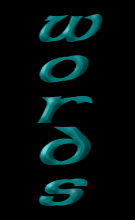June 27, 2001
Love of Story and
Language Propelled the 'Rings' Master
Michael Kenney
The Lord of the Rings, due out in time to be a moviegoer's Christmas present, could well be the movie of the year. But J.R.R. Tolkien, "author of the century"?
That provocative claim is not just a publisher's book-jacket puffery but the argument of T. A. Shippey in this authoritative - and timely - critical study of Tolkien's masterwork. Shippey, now at St. Louis University, taught the same curriculum established by Tolkien at Oxford University and succeded him, 54 years later, as chairman of English language and medieval literature at Leeds.
As Shippey presents it, the author-of-the-century claim is based on an equally provocative but as ably supported hypothesis, that "the dominant literary mode of the 20th century has been the fantastic" - not to be confused with "fantasy" fiction.
A "surprising claim," Shippey admits, but he suggests that "future literary historians" will see the century's "most representative and distinctive works" as including The Lord of the Rings, George Orwell's 1984 and Animal Farm, William Golding's Lord of the Flies, Kurt Vonnegut's Slaughterhouse-Five - a list to which most readers can add their own nominations.
Most of these writers, Shippey notes, were present at "the most traumatically significant events of the century," in Tolkien's case, the carnage at the Somme during World War I. "I argue that [Tolkien's] continuing appeal rests not on mere charm or strangeness," Shippey writes, "... but on a deeply serious response to what will be seen in the end as the major issues of his century," most obviously "the origin and nature of evil."
But while Shippey notes that Tolkien "dismissed contemptuously" the speculation that The Lord of the Rings was an allegory of World War II - not least of all because he had started work on it after the publication of The Hobbit, in 1937 - he argues that by the time the first book of the trilogy, The Fellowship of the Ring, was published, in 1954, "it was for the first time in the history of the world possible for political leaders to say they would have `naught' and make it come true," in the destructive power of the atomic bomb, for which the Ring can be seen as a stand-in. Tolkien, he writes, could not say "nuclear fire" in Denethor's prophecy "It shall all go up in a great fire, and all shall be ended. Ash! Ash and smoke blown away on the wind!" - "but the thought fits."
Having made his author-of-the-century case, Shippey turns to a critical analysis of The Lord of the Rings itself - as well as to Tolkien's other works. "Before he became a mythologist," Shippey notes, Tolkien was a philologist, specifically an authority on Old English (Anglo-Saxon) language and literature. In his 1940 preface to a prose translation of Beowulf, Tolkien remarks on "the unrecapturable magic of ancient English verse" and its "profound feeling and poignant vision, filled with the beauty and mortality of the world," a sense that animates his own work. In his explication of the Anglo-Saxon underpinnings of The Lord of the Rings what Shippey provides is on the same order as Tolkien's preface to Beowulf, and is made eminently accessible by being placed in the context of the narrative itself.
Among Tolkien's embodiments of evil are the ringwraiths, the Black Riders, "an original and compelling" concept, Shippey remarks. The word, he explains, is a compound, the first half familiar, the second "more mysterious," a puzzle "of the kind that always attracted Tolkien's attention." His linguistic sleuthing led him, via the Old English verb "to writhe," to a 16th-century Scots translation of Virgil's Aeneid in which "wraith" appears as a word derived from the Old English verb meaning a ghost or the ghostly appearance of a living person.
From this linguistic scholarship, Tolkien creates this vivid passage, in which the Black Riders swoop overhead, in the chapter "The Siege of Gondor": "Suddenly as they talked they were stricken dumb, frozen as it were to listening stones. ... Pippin knew the shuddering cry that he had heard: it was the same that he had heard long ago in the Marsh of the Shire, but now it was grown in power and hatred, piercing the heart with a poisonous despair."
A second example of how Tolkien uses language to shape his story occurs in the 15,000-word chapter "The Council of Elrond," in which the question of what to do about the Ring is finally decided - and the plot of the book determined. The chapter is "a tour de force," Shippey writes, in which Tolkien uses different modes of speech to identify the standing and character of the 20-some speakers - from the archaic to the colloquial.
Of course it will be possible to see, enjoy, even appreciate, the film without reading (or rereading) the book - or delving into the mysteries of Old English language and literature. But, as Tolkien suggested, "the applicability" of such matters "resides in the freedom of the reader" - or filmgoer.
